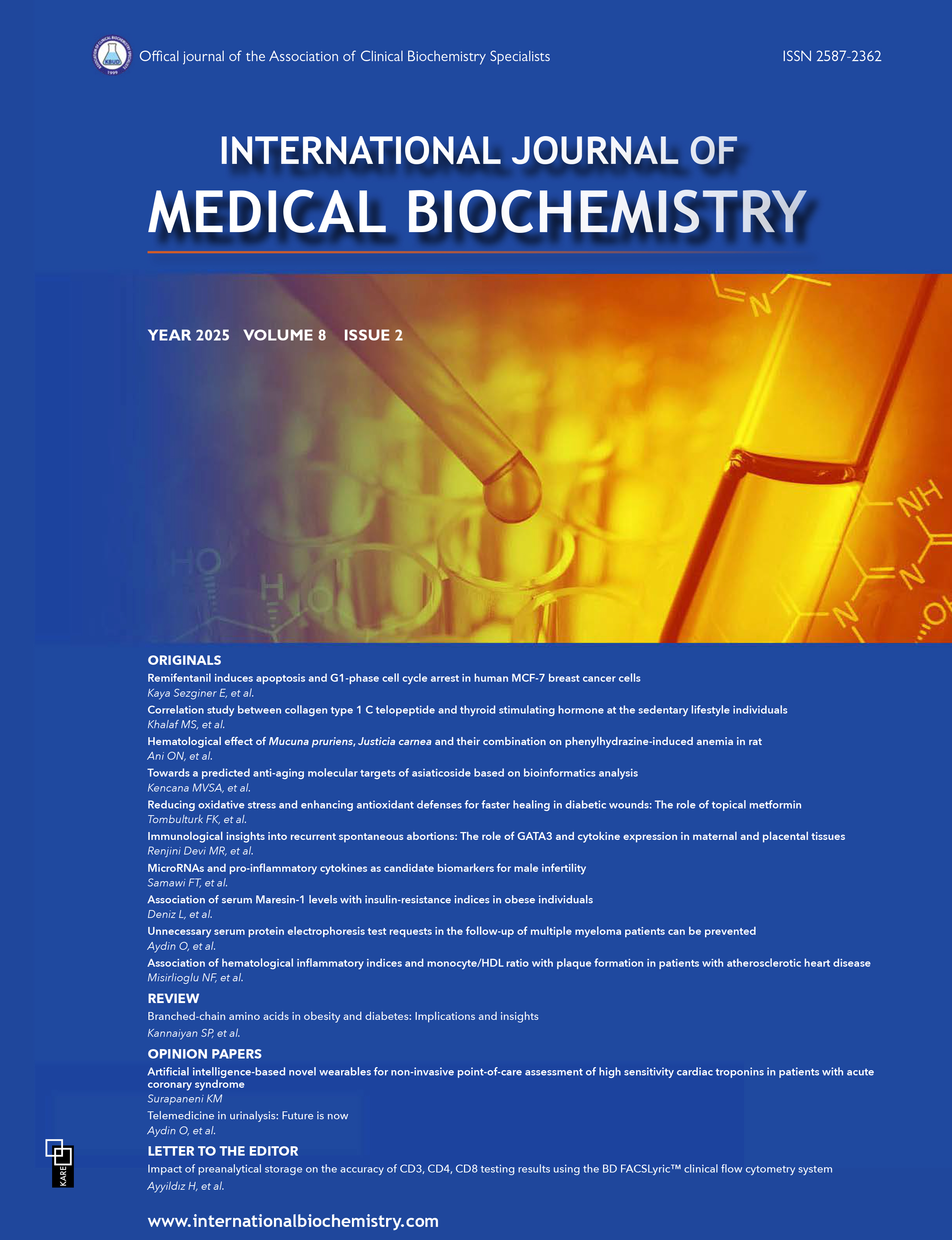Investigation of the distribution of thyroid dysfunction in the geriatric patient population in Corum province
Mustafa Şahin1, Alpaslan Karabulut2, Hüseyin Kayadibi31Department of Medical Biochemistry, Hitit University, Erol Olcok Training and Research Hospital, Corum, Turkey2Department of Internal Medicine, Hitit University Faculty of Medicine, Corum, Turkey
3Eskisehir Osmangazi University, Medical Faculty, Biochemistry Department, Eskisehir, Turkey
INTRODUCTION: The aim of this study was to identify and analyze the incidence of thyroid dysfunction in geriatric patients in Corum province, Turkey.
METHODS: The results of thyroid-stimulating hormone (TSH), free thyroxine (FT4), and free triiodothyronine (FT3) tests, as well as the demographic characteristics of 220 randomized patients were retrospectively investigated. Patients who had a total or partial thyroidectomy surgery and those receiving any medical thyroid treatment were not included in the study. The patients were divided into 5 groups: subclinical hypothyroidism, hypothyroidism, euthyroid, subclinical hyperthyroidism, and hyperthyroidism.
RESULTS: In the group, 114 were male and 106 were female. The mean age of the male and female patients was 74±7 years and 75±7 years, respectively. The entire study group had a median TSH of 0.94 μIU/mL (25th-75th percentile, interquartile range [IQR] 0.33-1.86 μIU/mL), a median FT4 of 1.14 ng/dL (IQR: 1.02-1.33 ng/dL), and a median FT3 of 2.73 pg/mL (IQR: 2.25-3.11 pg/mL). For male patients, the median TSH was 0.87 μIU/mL (IQR: 0.36-1.66 μIU/mL), the median FT4 was 1.14 ng/dL (IQR: 1.02-1.29 ng/dL), and the median FT3 was 2.74 pg/mL (IQR: 2.18-3.15 pg/mL), while for female patients the median TSH was 0.95 μIU/mL (IQR: 0.20-2.21 μIU/mL), the median FT4 was 1.17 ng/dL (IQR: 1.06-1.38 ng/ dL), and the median FT3 was 2.72 pg/mL (2.31-3.10 pg/mL). Of the males, 1.8% had subclinical hypothyroidism, another 1.8% had hypothyroidism, 72.8% were euthyroid, 19.3% had subclinical hyperthyroidism, and 4.4% had hyperthyroidism. Among the females, there were findings of 2.8% subclinical hypothyroidism, 1.9% hypothyroidism, 64.2% euthyroid, 26.4% subclinical hyperthyroidism, and 4.7% hyperthyroidism. No statistically significant difference was observed when the diagnosis incidence was compared according to gender (p=0.696).
DISCUSSION AND CONCLUSION: Independent of gender, the geriatric patient population had a high incidence of subclinical hyperthyroidism, which often has a delayed diagnosis. This can complicate the prompt diagnosis of other metabolic diseases. As thyroid function affects the metabolism of the entire body, thyroid hormone status should be investigated when considering other metabolic diseases in geriatric patients. Excluding thyroid disfunction could save time in making an accurate diagnosis and providing treatment. Furthermore, since thyroid diseases are influenced by environmental iodine, regional thyroid disease incidence studies should be performed.
Manuscript Language: English






